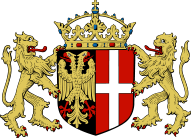Sights
Artikel

Basilica of St. Quirinus
An imposing landmark of the city of Neuss is its late romanesque church, one of the most important in the Lower Rhineland.

Obertor
As one of the most massive city gates in the Rhineland, the Obertor was built around the year 1200 AD.

Zeughaus (Arsenal)
From 1637 to 1802, the current Zeughaus building complex was both a church and cloister for the Franciscans.

Vogthaus
The former "Vogt- und Dinghaus zu den Heiligen Drei Königen" was built in 1597 by the Provost John Horn known as Goldschmidt.

Em Schwatte Päd
Town brick house built in 1603 in the architectural style of Renaissance.

City Wall (Hamtorplatz)
Remains of the medieval city wall. Walkway arch of the 13th Century, outer walls of the 14th Century. Reconstruction (2003) of the foundations of the high Hamto

Museum “Insel Hombroich”
Art and nature unite in perfect harmony in a private museum set in 20 hectares of park and meadowland created by the landscape planner Bernhard Korte.

Langen Foundation
The Langen Foundation is an art foundation that maintains its art and exhibition complex on the site of the former NATO missile base in Neuss.

Clemens-Sels-Museum
The Clemens-Sels-Museum is a modern building housing multiple topics: Art from the Middle Ages to the Baroque painting and the Dutch can be viewed.

Rheinisches Schützenmuseum
As part of the Clemens-Sels Museum, Haus Rottels houses many memories of the city's history from the 19th and 20th centuries.

Globe Theater
Shakespeare fondly called his Globe Theatre "My wooden O".

Churches and Church Art
Seven Churches offer interesting insights to local Church Art.

Cybele Baptistry
In 1956, a late-antique stone cellar was discovered during emergency excavations at the place known today as the Gepaplatz square in Neuss.

Children’s Farm
The children's farm is situated in the recreational area of Reuschenberger Busch and Selikumer Park on the River Erft.
